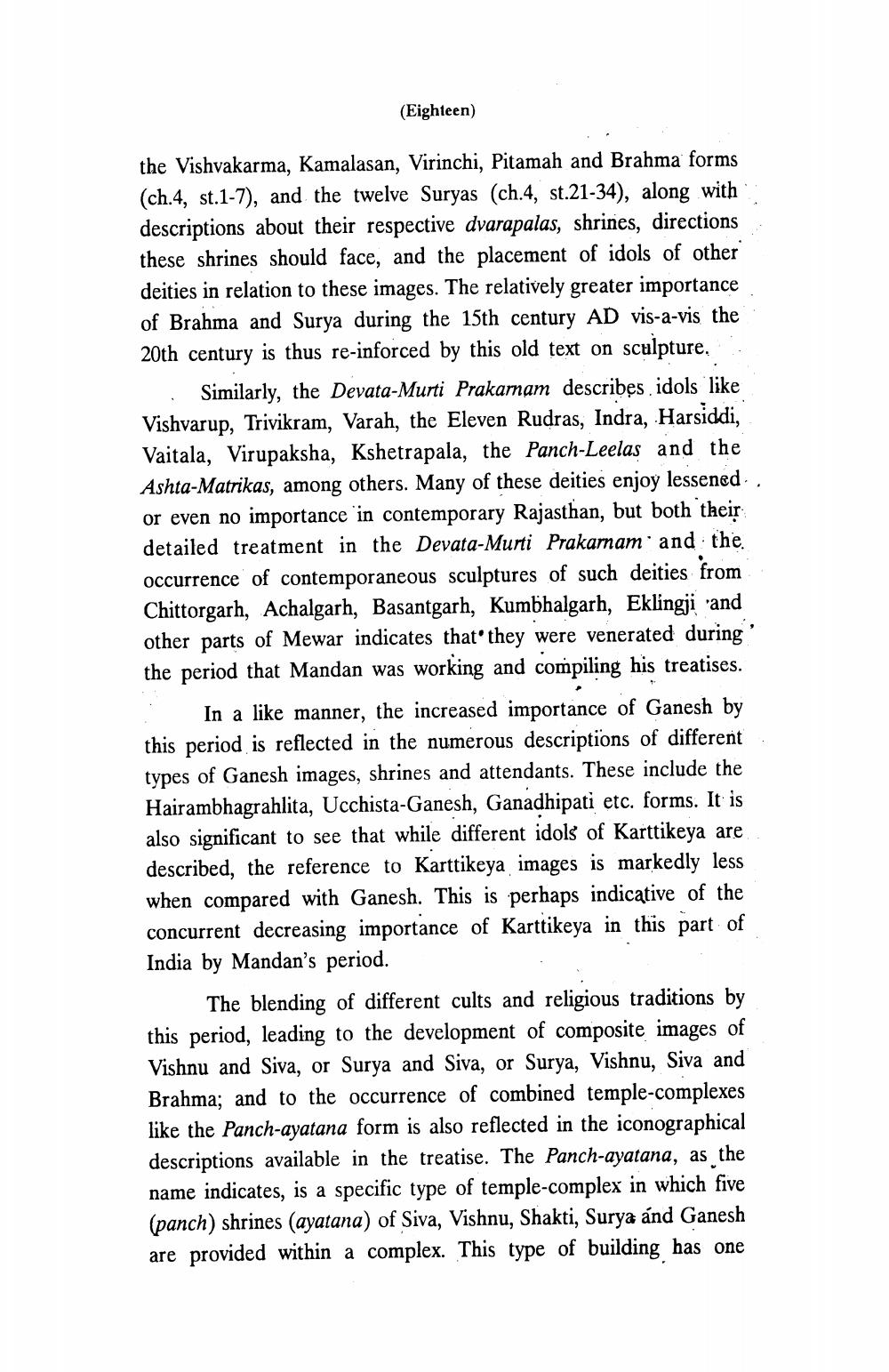________________
(Eighteen)
the Vishvakarma, Kamalasan, Virinchi, Pitamah and Brahma forms (ch.4, st.1-7), and the twelve Suryas (ch.4, st.21-34), along with descriptions about their respective dvarapalas, shrines, directions these shrines should face, and the placement of idols of other deities in relation to these images. The relatively greater importance of Brahma and Surya during the 15th century AD vis-a-vis the 20th century is thus re-inforced by this old text on sculpture.
Similarly, the Devata-Murti Prakaram describes idols like Vishvarup, Trivikram, Varah, the Eleven Rudras, Indra, Harsiddi, Vaitala, Virupaksha, Kshetrapala, the Panch-Leelas and the Ashta-Matrikas, among others. Many of these deities enjoy lessened or even no importance in contemporary Rajasthan, but both their detailed treatment in the Devata-Murti Prakarnam and the occurrence of contemporaneous sculptures of such deities from Chittorgarh, Achalgarh, Basantgarh, Kumbhalgarh, Eklingji and other parts of Mewar indicates that they were venerated during' the period that Mandan was working and compiling his treatises.
In a like manner, the increased importance of Ganesh by this period is reflected in the numerous descriptions of different types of Ganesh images, shrines and attendants. These include the Hairambhagrahlita, Ucchista-Ganesh, Ganadhipati etc. forms. It is also significant to see that while different idols of Karttikeya are described, the reference to Karttikeya images is markedly less when compared with Ganesh. This is perhaps indicative of the concurrent decreasing importance of Karttikeya in this part of India by Mandan's period.
The blending of different cults and religious traditions by this period, leading to the development of composite images of Vishnu and Siva, or Surya and Siva, or Surya, Vishnu, Siva and Brahma; and to the occurrence of combined temple-complexes like the Panch-ayatana form is also reflected in the iconographical descriptions available in the treatise. The Panch-ayatana, as the name indicates, is a specific type of temple-complex in which five (panch) shrines (ayatana) of Siva, Vishnu, Shakti, Surya and Ganesh are provided within a complex. This type of building has one




